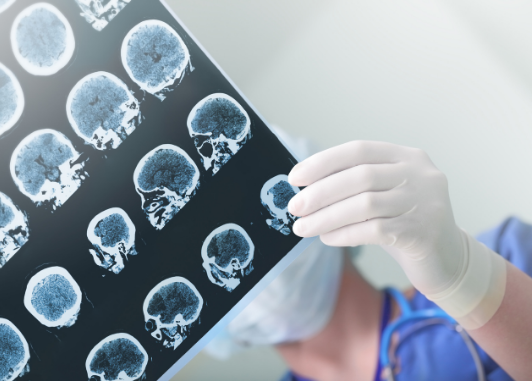By Kateriine Orav, Department of Neurology, North Estonia Medical Centre, Tallinn, Estonia
In 2019 the WHO, in collaboration with the International League Against Epilepsy (ILAE) and the International Bureau for Epilepsy (IBE) emphasized the importance of prevention in their global report on epilepsy.1 Stroke is one of the most common preventable causes of epilepsy, especially in older adults.
With increasing numbers of stroke survivors the number of patients with post-stroke epilepsy is expected to increase.2 Post-stroke epilepsy is associated with long-term disability and up to 25% of cases may become resistant to antiepileptic drugs.3
Post-stroke epilepsy develops in up to 12% of stroke patients and may develop with a latency of years after the primary insult.4 This may allow for interventions to prevent epileptogenesis, the process of acquiring a predisposition for seizures, in high risk patients. We will review risk factors and biomarkers of post-stroke epilepsy today, and a second post will look into possible antiepileptogenic interventions.
Common risk factors for post-stroke epilepsy are younger age (<65 years), haemorrhagic stroke, alcohol use, cortical involvement (especially areas like the parieto-temporal cortex, supra marginal gyrus, superior temporal gyrus), and more severe stroke.3 In addition, viable islands of spared tissue and partly destroyed areas within a cortical infarction region have been associated with post-stroke epilepsy.5
While seizures during the first week after stroke do not warrant a diagnosis of epilepsy, the occurrence of early seizures considerably increases the risk of developing post-stroke epilepsy.3 However, a significant amount of early seizures are purely electrographic hence underrecognized. Studies using continuous electroencephalographic monitoring in the acute phase have shown a prevalence as high as 14.6% for early seizures and 2.6% for non-convulsive status epilepticus after ischaemic stroke and up to a third in patients with haemorrhagic stroke.6
Interestingly, some studies have associated reperfusion therapy with early seizures and epileptiform activity on EEG. Possible proconvulsant mechanisms of tPA include the reperfusion/hyperperfusion syndrome, secondary cortical infarction from distal embolisation, haemorrhagic transformation and possible neurotoxic effects. However, by decreasing the severity of stroke, an important risk factor for post-stroke epilepsy, reperfusion therapies could also decrease the risk of post-stroke epilepsy.7 A possible association between reperfusion therapy and post-stroke epilepsy remains to be answered.
There are validated clinical tools to predict the 5-year seizure risk after stroke, such as the SeLECT score for ischaemic stroke and CAVE score for haemorrhagic stroke.3 The SeLECT score considers early seizures and the severity, aetiology and location of stroke to predict the risk of late seizures, while cortical involvement, age <65 years, volume >10mm and early seizures are included in the CAVE score.3
However, to increase the predictive accuracy of the above clinical tools it will be important to incorporate biomarkers. EEG could be a promising tool as EEG abnormalities have been shown to predict the development of epilepsy in the first year after stroke, independent of stroke severity.6 Recently, several blood biomarkers have also been described.8 The collaborative EU-funded EpiTarget project focused on identifying biomarkers of epileptogenesis, including proteins and RNAs in biofluids as well as imaging techniques.9 Even though most of the findings require further research before they could have any clinical influence, an important step has been made towards a better understanding of epileptogenesis. Only if we can identify patients at high risk for post-stroke epilepsy with reasonable accuracy will we be able to study antiepileptogenic interventions adequately.5
References:
- World Health Organization. Epilepsy: a public health imperative. 2019 Retrieved from: https://www.who.int/mental_health/neurology/epilepsy/report_2019/en/
- Thurman DJ, Begley CE, Carpio A, et al. The primary prevention of epilepsy: A report of the Prevention Task Force of the International League Against Epilepsy. Epilepsia. 2018 May;59(5):905-914. doi: 10.1111/epi.14068
- Feyissa AM, Hasan TF, Meschia JF. Stroke-related epilepsy. Eur J Neurol. 2019 Jan;26(1):18-e3. doi: 10.1111/ene.13813
- Graham NS, Crichton S, Koutroumanidis M, et al. Incidence and associations of poststroke epilepsy: the prospective South London Stroke Register. Stroke. 2013 Mar;44(3):605-11. doi: 10.1161/STROKEAHA.111.000220.
- Pitkänen A, Roivainen R, Lukasiuk K. Development of epilepsy after ischaemic stroke. Lancet Neurol. 2016 Feb;15(2):185-197. doi: 10.1016/S1474-4422(15)00248-3.
- Zelano J, Holtkamp M, Agarwal N, et al How to diagnose and treat post-stroke seizures and epilepsy. Epileptic Disord. 2020 Jun 1;22(3):252-263. doi: 10.1684/epd.2020.1159.
- Bentes C, Brigo F, Zelano J, Ferro JM. Reperfusion therapies and poststroke seizures. Epilepsy Behav. 2020 Mar;104(Pt B):106524. doi: 10.1016/j.yebeh.2019.106524.
- Abraira L, Santamarina E, Cazorla S, et al. Blood biomarkers predictive of epilepsy after an acute stroke event. Epilepsia. 2020 Oct;61(10):2244-2253. doi: 10.1111/epi.16648.
- Pitkänen A, Henshall DC, Cross JH, et al. Advancing research toward faster diagnosis, better treatment, and end of stigma in epilepsy. Epilepsia. 2019 Jul;60(7):1281-1292. doi: 10.1111/epi.16091.



